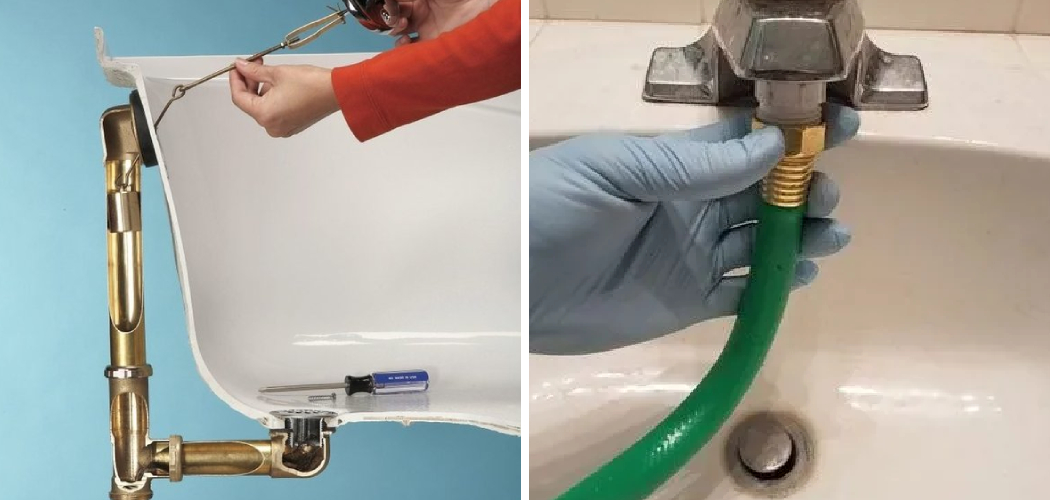Unfreezing a bathtub drain can be a frustrating task, especially during the colder months when pipes are prone to freezing. Understanding the causes of ice formation within your plumbing system and knowing the right techniques to melt the ice is essential for restoring proper drainage.
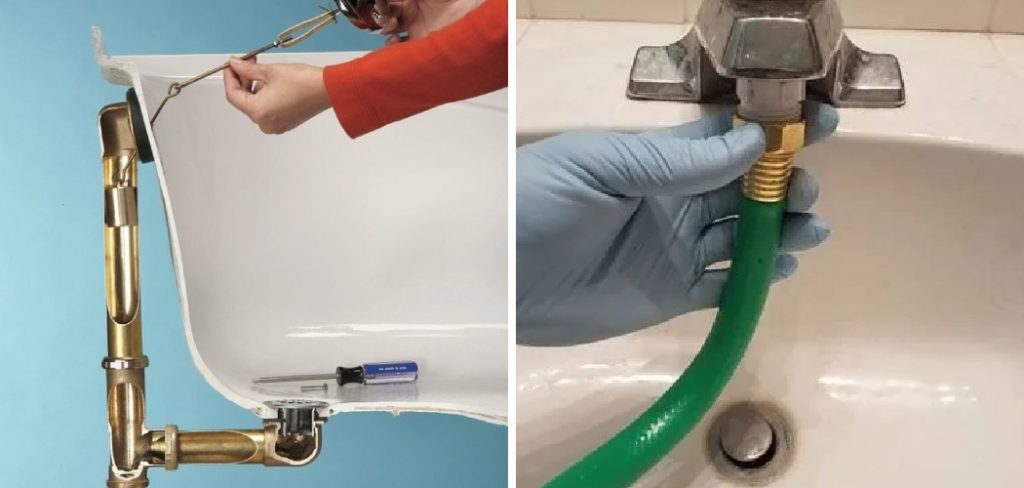
This guide on how to unfreeze bathtub drain will provide you with effective methods to safely unfreeze your bathtub drain, ensuring that your bathroom remains functional and free from standing water. With a little patience and the right tools, you can tackle this common problem with confidence.
Why Do Bathtub Drains Freeze?
Before we delve into the methods of unfreezing a bathtub drain, it is important to understand why these drains freeze in the first place. The most common reason for frozen bathtub drains is cold weather. When temperatures drop below freezing, the water within your pipes can also freeze, causing blockages and preventing proper drainage.
Another potential cause for a frozen bathtub drain is poor insulation around your plumbing system. If there are exposed pipes or cracks in your home’s foundation, cold air can seep in and cause ice formation within the pipes.
Additionally, if you have not been using your bathtub regularly, water may have accumulated and frozen within the drain itself. This stagnant water can freeze and create a blockage, preventing any future drainage.
Needed Materials
Hot Water:
One of the simplest and most effective ways to unfreeze a bathtub drain is by pouring hot water down the drain. The heat from the water will melt the ice and clear any blockages within the pipes. Make sure to use hot water, not boiling, as this can damage your pipes.
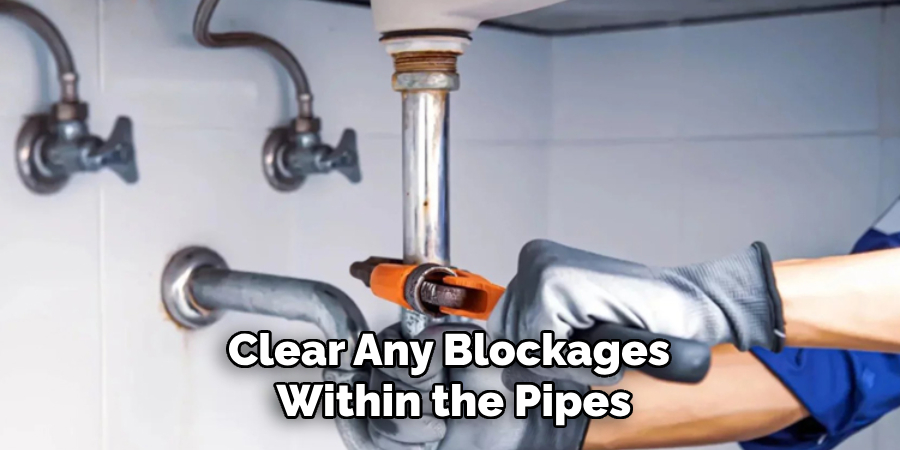
Plunger:
A plunger can also be used to create pressure and force through any ice or debris blocking the drain. To use a plunger on a frozen bathtub drain, fill the tub with enough hot water to cover the bottom of the plunger cup. Place it over the drain and push down firmly, then pull up quickly. Repeat this motion several times until you see signs of drainage.
Hairdryer:
If you have access to an electrical outlet in your bathroom, using a hairdryer on the lowest heat setting can also help thaw out frozen pipes. Hold the hairdryer close to the drain and direct the warm airflow towards it until the ice melts.
Salt and Boiling Water:
Salt is known for its ability to lower the freezing point of water. Therefore, pouring salt down a frozen bathtub drain can help melt any ice within the pipe. First, pour a small amount of salt into the drain, followed by boiling water. Let it sit for a few minutes before attempting to flush with hot water.
7 Simple Step-by-step Guidelines on How to Unfreeze Bathtub Drain
Step 1: Remove Any Excess Water
Before attempting to unfreeze your bathtub drain, it’s crucial to remove any excess water in the tub. Use a bucket or a wet-dry vacuum to effectively siphon off standing water. This step not only helps to minimize mess but also allows you to better assess the situation and identify how much ice is blocking the drain.

Once the excess water is removed, you can proceed with the unfreezing methods outlined in the previous section.
Step 2: Inspect the Drain
After removing any excess water, the next step is to carefully inspect the drain for any visible signs of ice formation or blockages. Look for any ice buildup around the drain opening or along the exposed pipes leading to the drain. If you can access the plumbing beneath the tub, check for any frozen sections or cracks that may be contributing to the problem.
Additionally, examine the drain cover or stopper, as debris may also accumulate here and hinder water flow. Identifying the specific area of blockage can help you choose the most effective method to unfreeze the drain and ensure proper drainage once the ice is removed.
Step 3: Use Hot Water
Once you have inspected the drain and identified the areas of blockage, it’s time to utilise hot water to help melt the ice. Begin by boiling water in a kettle or pot—ensure that the water is hot, but not boiling, to prevent any potential damage to your pipes. Carefully pour the hot water down the drain in a slow, steady stream.
Allow the water to sit for a few minutes; this will create heat that penetrates the ice blockage, effectively melting it. If you notice that the water isn’t draining yet, you can repeat this process a couple of times, being cautious not to overwhelm the drain with too much water at once. This method is often among the quickest and most efficient ways to tackle a frozen bathtub drain, especially when combined with the other techniques you’ve learned.
Step 4: Use a Plunger
If hot water alone isn’t enough to restore proper drainage, you can also try using a plunger. This method is particularly useful if the blockage is caused by debris, hair or other particles trapped within the drain.
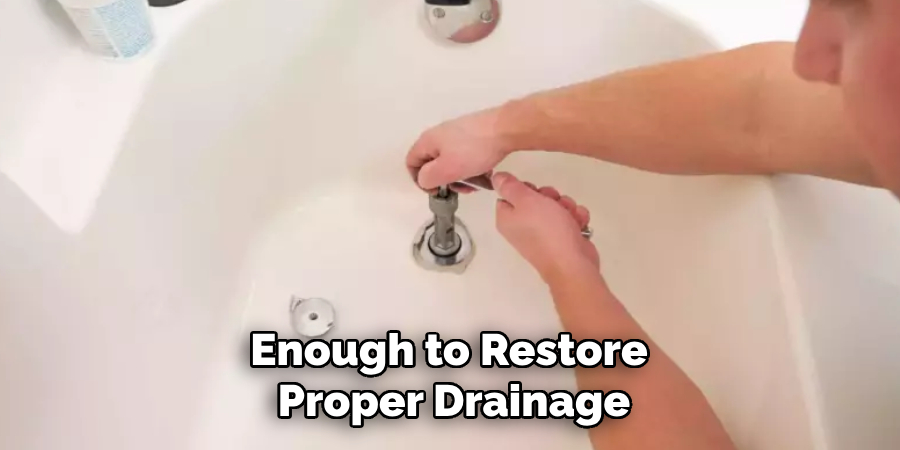
Fill the tub with just enough hot water to cover the bottom of your plunger cup, then place it over the drain and push down firmly. Pull up quickly while maintaining pressure on the plunger to create suction and dislodge any obstructions within the pipe. Repeat this motion several times until you see signs of improved drainage.
Step 5: Utilise Salt and Boiling Water
If the previous methods have not fully resolved the issue, combining salt with boiling water can be an effective way to further address the frozen blockage in your bathtub drain. Start by pouring a generous amount of salt directly into the drain. The salt works by lowering the freezing point of the water, helping to break down any ice that has formed.
After adding the salt, carefully boil a kettle of water. Once boiling, slowly pour the hot water down the drain, allowing it to mix with the salt and work its way through the ice blockage. Allow the mixture to sit for several minutes to maximize its effectiveness. Finally, follow up with another flush of hot water to clear any remaining debris and ensure your drain is fully functional.
Step 6: Use a Hairdryer
If you have access to an electrical outlet in your bathroom, using a hairdryer can also be an effective technique for unfreezing a bathtub drain. After removing any standing water from the tub and inspecting the drain, take your hairdryer and set it to the lowest heat setting. Hold the dryer close to the drain opening and direct the warm airflow towards it.
The heat from the dryer will slowly melt any ice within the pipe, allowing for proper drainage. Be patient as this method may take longer than others, but it can be especially useful for hard-to-reach areas or small cracks where ice may have formed.
Step 7: Seek Professional Help if Needed
If, after trying these methods, your bathtub drain is still not functioning correctly, it may be time to call in a professional plumber. They will have the necessary equipment and expertise to effectively remove any stubborn ice blockages in your pipes. Furthermore, they can also inspect your plumbing system for potential damage or leaks that may need repair.
Regular maintenance and prevention are always the best ways to avoid frozen bathtub drains. However, following these simple steps on how to unfreeze bathtub drain can help you quickly and effectively unfreeze your drain and restore proper functionality. Remember to always use caution when attempting to fix plumbing issues on your own, and seek professional assistance if needed. With the right approach, you can easily solve this common winter problem and enjoy a warm, relaxing bath without any further concerns.
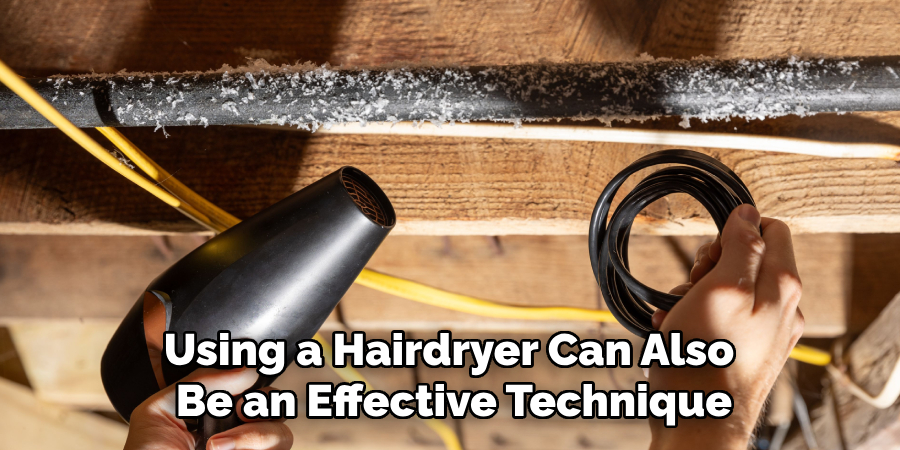
How Much Does Unfreeze Bathtub Drain Cost?
The cost of unfreezing a bathtub drain can vary widely depending on several factors, including the severity of the blockage, your location, and whether you choose to tackle the issue yourself or hire a professional. If opting for DIY methods, the expenses may be minimal, often just involving the purchase of common household items like salt, hot water, or a hairdryer, typically amounting to less than $20.
In contrast, if you require professional assistance, the costs can range from $100 to $300, depending on the complexity of the situation and the rates charged by local plumbers. This price generally includes an inspection of your plumbing system, any necessary repairs, and removal of ice blockages. It’s advisable to get multiple quotes from local professionals to ensure you receive a fair estimate for your specific needs.
Conclusion
Dealing with a frozen bathtub drain can be a frustrating experience, especially during the colder months. However, by following the step-by-step methods on how to unfreeze bathtub drain outlined above, you can effectively address the issue without the need for immediate professional help. From using hot water and plungers to employing household items like salt and hairdryers, there are various strategies available to tackle ice blockages. Remember to stay patient and methodical in your approach.
If you find that the problem persists despite your efforts, don’t hesitate to reach out to a professional plumber for assistance. Regular maintenance and attention can prevent future issues, allowing you to enjoy your bathing experience without interruption.

